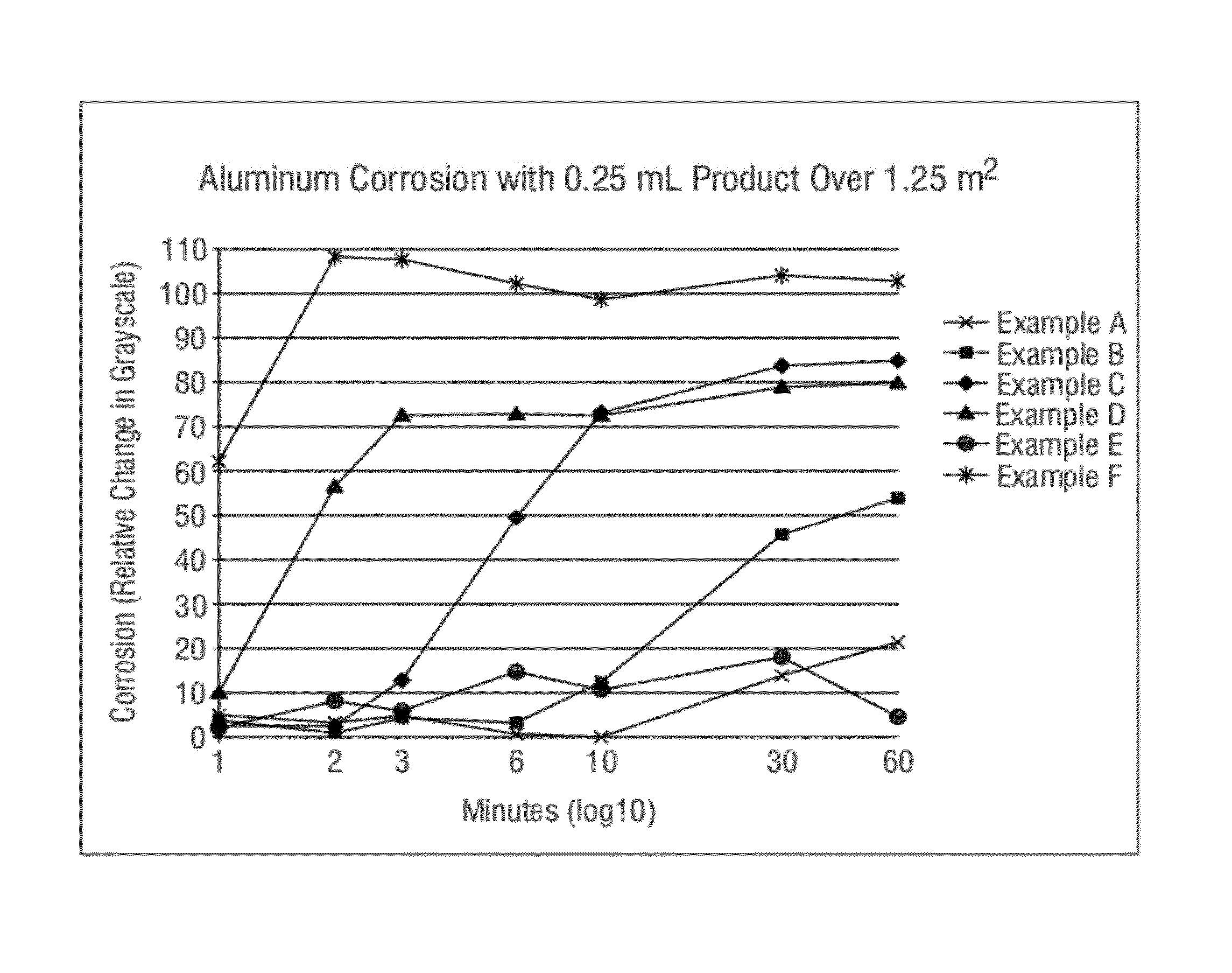Non-corrosive oven degreaser concentrate
a technology of oven degreaser and concentrate, which is applied in the direction of oven-cleaning compositions, detergent compounding agents, liquid cleaning, etc., can solve the problems of difficult cleaning, significant cleaning problems for the food industry, contamination of food processing equipment and/or environmental surfaces,
- Summary
- Abstract
- Description
- Claims
- Application Information
AI Technical Summary
Benefits of technology
Problems solved by technology
Method used
Image
Examples
example 1
[0081]Preparation of polymerized Corn Oil Panels. Corn oil soils were prepared onto 3×5 inch stainless steel panels by lightly coating corn oil using a 2 inch polyurethane brush. The panels were coated to ensure no streaks of bare steel remained and any excess oil was removed using only the weight of the brush. Panels were then placed on an aluminum tray and cooked in a 375° F. oven for approximately 20 minutes until the polymerized oil was no longer tacky and exhibited a light amber color. After approximately 10 minutes of cooking the oil begins to polymerize and thicken and smoke evolves from the oil. The pan should be rotated to ensure panels are evenly heated in oven. The panels are then allowed to cool overnight before testing with cleaning / degreasing formulations. There are various regulations control standards for non-corrosive products.
[0082]According to an initial embodiment of the invention, a targeted formulation contains about 16% benzyl alcohol and 7% monoethanolamine w...
example 2
[0083]Additional formulations eliminating sodium from the degreaser formulation were prepared and analyzed in accordance with the soil removal from the corn oil panels described in Example 1. The monoethanolamine was used to replace the sodium. Improved performance and the reduction of potential residues on catalytic converters for convection microwave ovens and other applications were tested. A formulation of benzyl alcohol, monoethanolamine, linear alkyl benzene sulfonate and water was tested (forming a clear solution). The formulation achieved complete removal of soil (12480-35) within 3 minutes of contact.
example 3
[0084]Additional formulations were analyzed to determine the minimum amount of linear alkyl benzene sulfonate required in a degreaser concentrate to couple or solubilize the benzyl alcohol. The impact of the formulation modifications were also tested against use solution VOC levels of the formulation. A formulation of benzyl alcohol, monoethanolamine, 2-(2-Aminoethoxy)ethanol, linear alkyl benzene sulfonate and water was tested and achieved a clear solution.
PUM
| Property | Measurement | Unit |
|---|---|---|
| time | aaaaa | aaaaa |
| time | aaaaa | aaaaa |
| vapor pressure | aaaaa | aaaaa |
Abstract
Description
Claims
Application Information
 Login to View More
Login to View More - R&D
- Intellectual Property
- Life Sciences
- Materials
- Tech Scout
- Unparalleled Data Quality
- Higher Quality Content
- 60% Fewer Hallucinations
Browse by: Latest US Patents, China's latest patents, Technical Efficacy Thesaurus, Application Domain, Technology Topic, Popular Technical Reports.
© 2025 PatSnap. All rights reserved.Legal|Privacy policy|Modern Slavery Act Transparency Statement|Sitemap|About US| Contact US: help@patsnap.com

